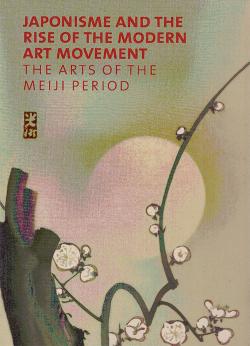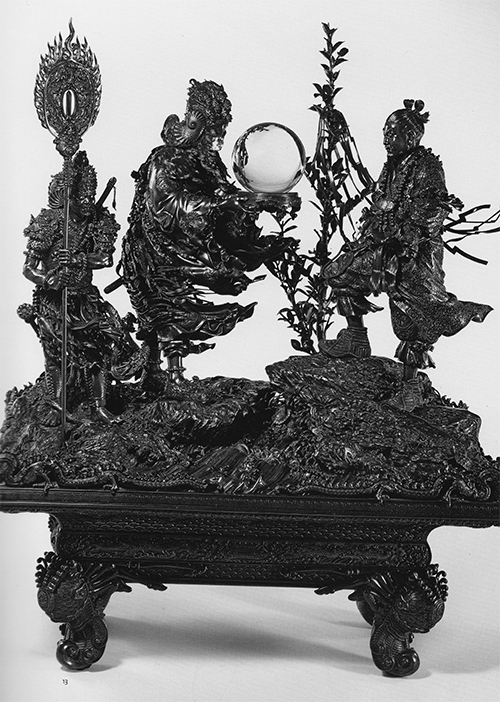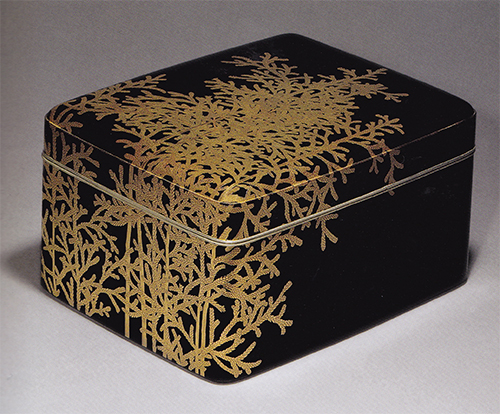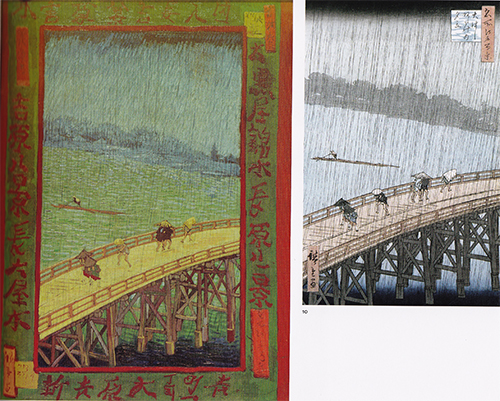Japonisme and the Rise of the Modern Art Movement: The Arts of the Meiji Period, The Khalili Collect

Edited by Gregory Irvine, foreword by Professor Nasser D. Khalili, Thames and Hudson, 2013, 240 pages, 22 colour illustrations, ISBN 978 0 500 239131, £45.
Review by Sir Hugh Cortazzi
This handsome and finely illustrated volume is introduced by Gregory Irvine of the Victoria and Albert Museum. Irvine heads his introduction with a quotation from a letter from Vincent van Gogh to his brother in which van Gogh wrote, ‘In a way all my work is founded on Japanese art.’
Axel Kruge contributes a chapter on ‘Vincent van Gogh and Japan’, John House writes about ‘Impressionism and Japan’ and Kim Schiermeier discusses ‘Imitation or Innovation? van Gogh’s Japonaiserie and Japanese Art of the Meiji Period.’
This book is, however, much more than another book on Japonisme in late ninetenth century Europe. Gregory Irvine describes the way in which Japanese art objects reached the west in a chapter headed ‘From Namban to Meiji: The Availability and Reception of Japanese Art in Europe during the Meiji Period.’ Hiroko Yokomizu describes in another chapter ‘The Presentation and Reception of Japanese Art in Europe during the Meiji Period’ and Tayfun Belgin discusses ‘Viennese Japonisme: From the Figured-Perspective to the Ornamental-Extensive Style.’ This reminds readers that while Japaonisme may have originated in Paris and London Japanese art objects were popular throughout Europe.
In the Meiji period art products constituted a significant element in Japanese exports to western countries. The Japanese government made various efforts to promote such exports as one way of reducing Japan’s trade deficit with the West.
The market in Japan for Japanese works of art shrank as the social order was radically altered and the craze for western objects dominated society in Tokyo. Japanese artists, however, were able to keep and develop their skills by producing objects for the European and American markets as well as for sale to the globe trotters, who came in increasing numbers to Japanese shores and sought ever more souvenirs. The artists and craftsmen quickly learnt what sort of items appealed to Victorian taste. Much of what they produced went to help fill the cluttered rooms of the newly rich European middle classes.
Some of the items they produced were elaborate and highly decorated and conformed more to what might be termed Nikko Toshogu style rather than exquisite Kyoto refinement, but there could be no doubt about the fine workmanship and attention to detail which they displayed in their products.
This bronze of mythological figures dating from 1881 shows how much time and effort must have been put into so many pieces of Japanese metalwork designed for the European market:

Personally I prefer something in more restrained taste, such as this lacquer box made in 1910 and belonging to the Khalili collection (plate 27), which is a fine example of traditional Japanese lacquer making skills:

In the chapters showing the influence of Japanese art on impressionist painters, examples of paintings by such famous artists as Manet, Degas, Monet, Whistler and van Gogh are juxtaposed with Japanese wood block prints to show how the impressionists adopted styles and composition inspired by Japanese originals. Monet’s bridge over the lily pond is for instance juxtaposed with a Hiroshige print of the curved bridge at Kameido shrine in Edo. The most famous example of imitation by a western artist of a Japanese print is probably van Gogh’s copy of a Hiroshige print:

This is a book, which will interest all who want to learn about Japanese art exports in the nineteenth century, and who wonder in what ways Japanese art, especially wood block prints, influenced western artists in 19th century Europe.
I have one complaint. Who on earth chose to have this book printed in such a pale script? The printing is so lacking in black ink that it requires a major effort to read the script even under a strong light.

